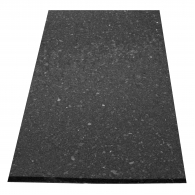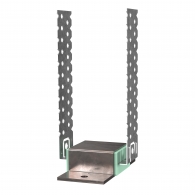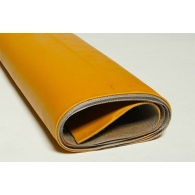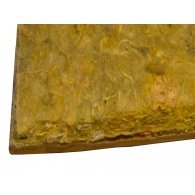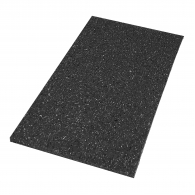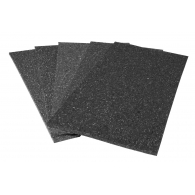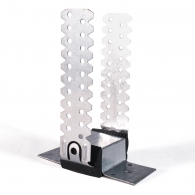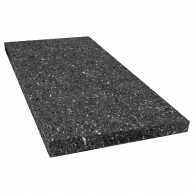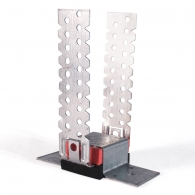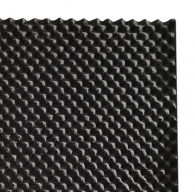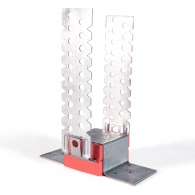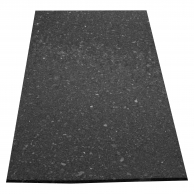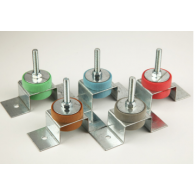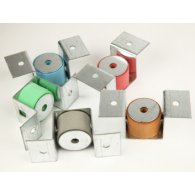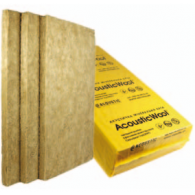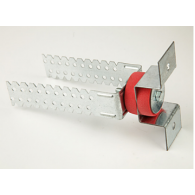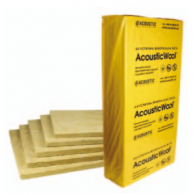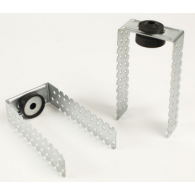Four methods of soundproofing rooms.
1. Decoupling
Most sounds and vibrations are transmitted through the building structure.
Consider an example from childhood:
Sound passing through walls is a stream of vibrations. The vibration travels with ease along a solid, straight path, like a child's phone, two matchboxes each attached to a string. With a little tension on the thread, two people can hear each other. If you cut the thread, the sound in the form of vibration will stop coming to another box.
According to this principle, the constructive solution of the decoupling works.

Decoupling is easier to consider when designing and constructing a building, for example by using beam studs so that two wall panels are supported by two different sets of studs, rather than both walls using the same studs and thus being connected.
Decoupling can also be done after the construction of the premises, using vibration decoupling, but the old walls, ceiling, floor will need to be dismantled first.
Decoupling is a key element in building a "room within a room" and is an effective solution.
2. Absorption
Absorption plays an important role in sound insulation. The hollow wall is an air trap, like the sound of the sea in a seashell. When a wall vibrates with sound, the air in the cavity of the wall vibrates in the same way as in the drum and transfers this vibration to another wall.
To absorb these vibrations, we recommend the use of sound-absorbing and porous materials:
Thanks to these materials, the sound energy in the wall is converted into insignificant thermal energy. The thicker the sound absorber is used in the wall sound insulation system, the more sound energy it absorbs.
When using acoustic wool, we recommend to securely isolate it from the room using an additional protective layer, which prevents glass fiber particles from entering the respiratory system, as this can cause serious illness.
3. Mass
Any hard thick and heavy material will block the sound. Brick wall, drywall, high density Macsound prof , heavy membrane are examples of good sound deadening materials that take advantage of this property.
This principle is the most effective solution in soundproofing apartments, soundproofing walls and partitions from airborne noise, such as voice, music, dog barking.
However, it is not particularly effective against impact noises such as footsteps and heels, which are transmitted mainly through building structures.
4. Damping (Damping)
If you lightly tap an empty glass with an iron object, the glass will ring. Now pinch it with your fingers, and the sound stops abruptly - this is the fading effect. The special damping property of a compound is its ability to convert sound energy into heat, so that the sound stops abruptly, as is the case with a wine glass.
In soundproofing, attenuation is carried out by viscoelastic materials such as Macsound prof 10mm or heavy membranes.
We recommend using sound-absorbing vibration-proof, sound-proof material Macsound prof , 5-10 mm wide, which is installed between two rigid panels (gypsum board, plywood). The panels are connected with screws.
This design perfectly implements the attenuation system by limiting the layers. If sound enters the system, it causes shear forces between the rigid panels that create friction in the attenuation layer, thereby converting the sound energy into heat.
Attenuation is the most effective solution for soundproofing apartments from low-frequency noise (impact noise, bass, construction equipment noise).


 Macsound prof
Macsound prof Acoustic foam
Acoustic foam Acoustic mineral wool
Acoustic mineral wool









